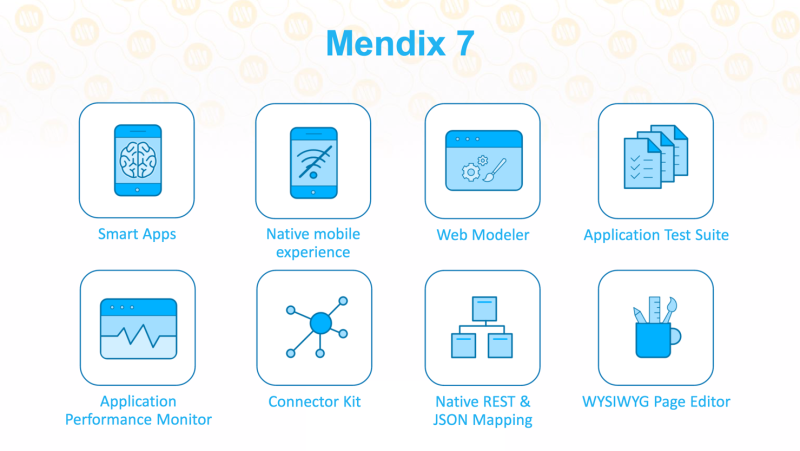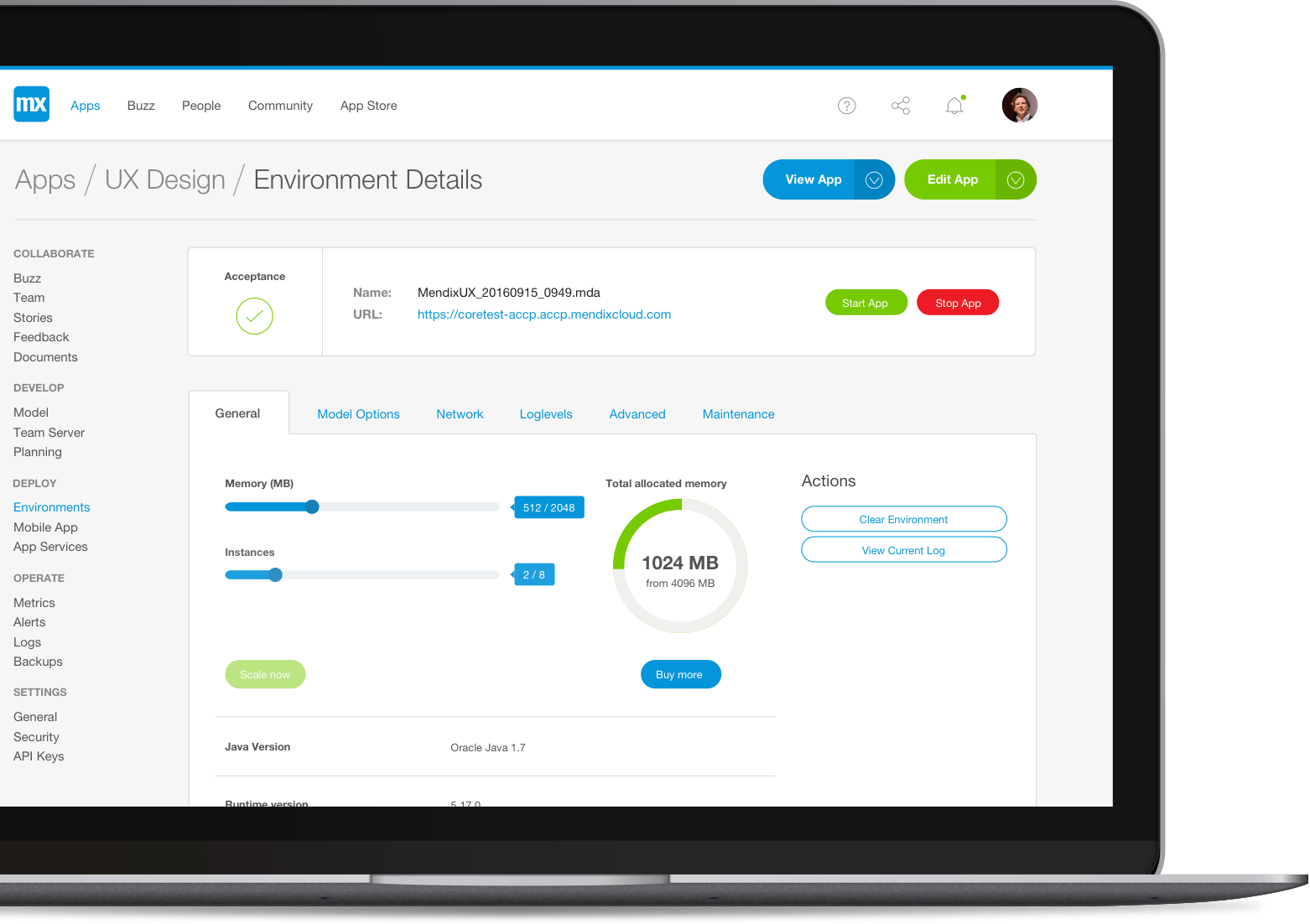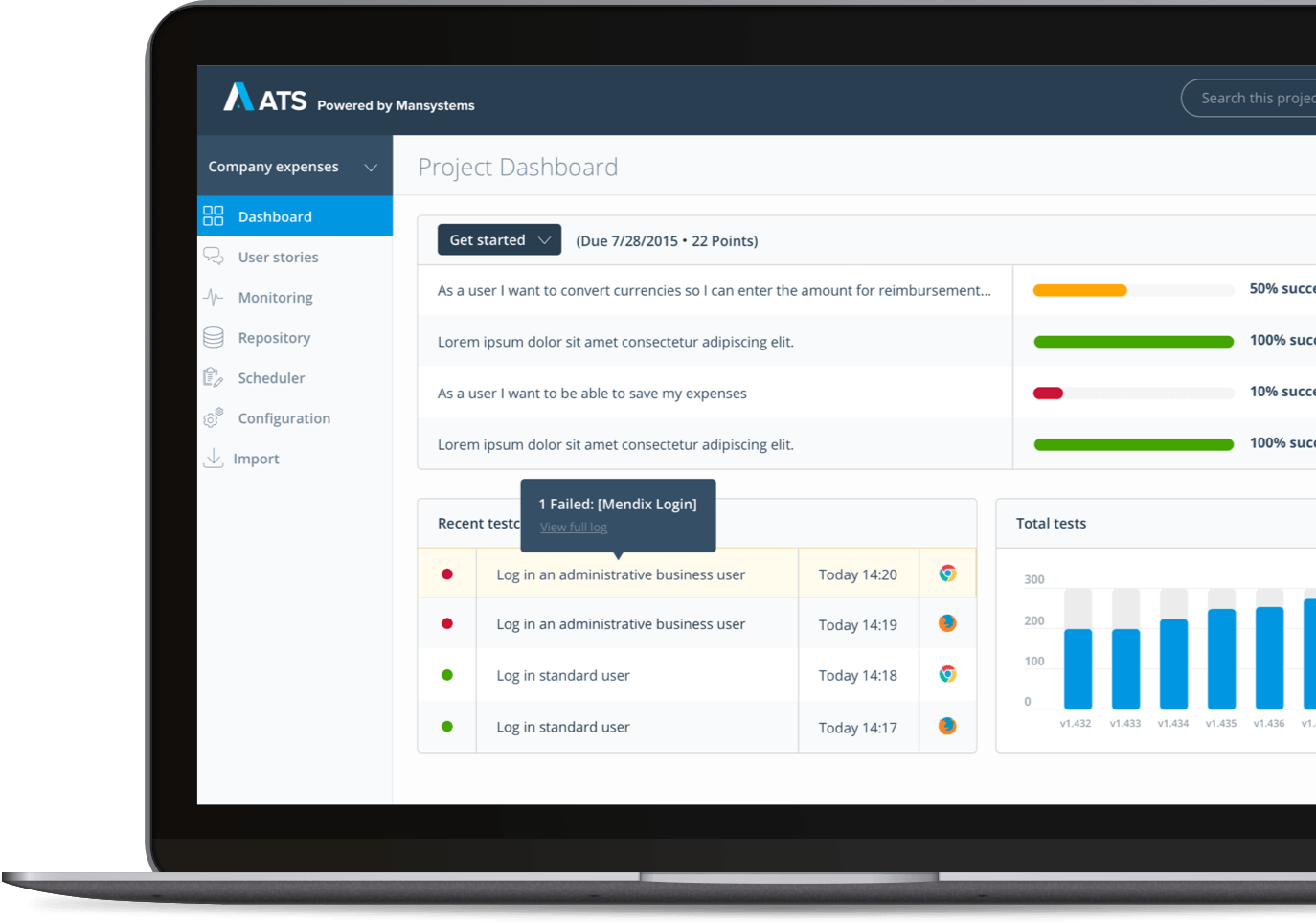Mendix Says Low-Code Platform Drives Speed of App Development & Fuels Digital Innovation
In 2017, the low-code platform sector is on fire, making it faster and easier to build web and mobile apps. At Mendix, their recipe for ‘low-code platform success’ goes beyond speed, with features to drive innovation from a lifecycle perspective. IDN speaks with Mendix CTO Johan den Haan about the importance of smart integration, collaboration and control.
by Vance McCarthy
Tags: apps, automation, cloud, collaboration, design, developer, integration, IoT, lifecycle, low-code Mendix, mobile, omni-channel, platform, REST, UI,

CTO
"If you can start 10 experiments every month, one will be your next cool app. That is where true digital transformation takes hold."
In 2017, the low-code platform sector is on fire as organizations doing digital transformation struggle to keep pace with demand for new web, mobile, IoT and omni-channel apps and UIs.
A recent Gartner report predicts that demand for enterprise mobile apps will grow at least five times faster than IT’s ability to deliver them. A similar surge in demand for IoT app support is also about to hit IT departments hard, as a separate Gartner report forecasts that 8.4 billion connected things will be in use worldwide in 2017 -- up a staggering 31 percent from 2016.
As the low-code platform use case is primarily speed of development, execs at low-code platform provider Mendix say enabling innovation is also key to digital success.
“To innovate as a company you need software, and of course that software needs to be built rapidly. But even if you speed up your app delivery, if you build the wrong things – that won’t help you very much,” said Johan den Haan, CTO of low-code platform provider Mendix. “So, you also need to build apps that are easily changeable.”
Such changeability is not simply about fixing bugs or fine-tuning an app; changeability lets teams more easily innovate -- and “try out crazy new ideas,” den Haan told IDN. We spoke with him in depth to learn more about how Mendix delivers 4 key ingredients for innovative new-gen apps (and flows) that can drive digital business success.
Mendix calls these “smart apps” and den Haan says they should have three characteristics:
Intelligent – Apps that can make recommendations and guide users to take the ‘next-best action’ using algorithms and machine learning
Proactive – Apps that predict what’s likely to happen next and automatically trigger workflows and push notifications that will tell the user users what to do – and when
Contextual – Apps that can be personalized, made aware of each individual users’ location and embedded in their processes.
Of note, these ‘smart apps’ today need to be pertinent to human-centric, analytics and IoT use cases, den Haan added. Not surprisingly, it’s tough to get these app just right on the first try.
“We’ve found it with many customers. If you can start 10 experiments every month, one will be your next cool app – or even your next business model. That is where true digital transformation takes hold – by enabling the entire organization to take early ideas into a prototype, and then to a scalable, production application.”
The Mendix Recipe for ‘Low-Code’ Innovation
To help ensure innovation can happen within a company, the Mendix platform assembles four ingredients in its low-code platform:
(1) speed and simplicity with drag-and-drop design
(2) smart integration via pre-built connectors
(3) collaboration between non-technical business users, developers teams and IT
(4) IT control across the life of the app
“We facilitate experimentation by letting you build your crazy idea, then let you grow and scale. Mendix will let business people to turn ideas into apps, and IT stays in control,” den Haan said. Mendix brings a lifecycle approach to low-code app development, marrying a low-code / no-code designer with automated testing, auto-scaling and performance monitoring.
“At Mendix, we focus on the entire lifecycle,” den Haan said. “So, for us, low-code is not just about easy development; it’s about fast deployment and making on-going updates and management easy.”
Through its approach to abstract all the detailed lower level coding, the Mendix platform can automate the underlying technologies that run the app, he added. “Low-code needs both abstraction and automation. That’s why low-code without DevOps is doomed,” he said.
Inside the 4 Dimensions of the Mendix Low-Code Lifecycle Platform
Mendix 7, the company’s latest low-code platform, provides drag-and-drop connectors to a wide range of apps, data, and services for mobile and IoT apps. It also sports connectors for big data and machine learning solutions – all without coding.
# 1 Speed and simplicity with drag-and-drop design
The Mendix designer uses a model-driven, graphical drag-and-drop approach. “When you define your data model, you also define entities, the attributes and the relationships. This is what makes a drag-and-drop approach possible. In Mendix, as a default, you never see the code,” den Haan said.
Under the covers, Mendix uses “a higher-level language to describe the app model via metadata to the Mendix runtime engine,” he added. Users can extend the low-code approach with Java, Scala or Javascript. “The idea is to allow apps to leverage any of these components for an idea -- without the need for complex coding,” den Haan said.
“Our Mendix app model has elements of data logic, UI, security and integration,” den Haan said. “The runtime engine converts the model and the app just runs. Think of an Atari console--you put in the game cartridge and you just play. Basically, in our case, the ‘game’ is the app model, and the game computer is the runtime engine.”

# 2 Smart integration via pre-built connectors
Crucial to this capability is also the ability to leverage popular components and services outside the Mendix platform via plug-and-play integration connectors.
“Mendix won’t build our own machine learning service (that s for the big guys that know how to do it, like Google and IBM,” den Haan said. “But we will turn, using that machine learning service, into a smart experience with all the elements you need -- UX, app logic, and integration to combine it with multiple other services.”
A key part of delivering this ‘smart experience’ is the Mendix ‘connector kit,’ a library of ready-built connectors to connect to a wide number of targets outside the Mendix platform. “Our platform is open, and designed to easily work with outside resource, so you can just drag-and-drop any number of services into your app [or flow] and immediately use them,” he said.
Thanks to the connectors, outside services to manipulate data, trigger push notifications, open pages or other services will appear as native drag-and-drop elements users can simply plug into their apps or process flows, den Haan said.
Specifically, Mendix 7’s out-of-the box connectivity supports a variety of native Mendix code-free features, as well as code-free integration with popular third-party services:
Amazon’s AWS IoT – a managed cloud platform that lets connected devices easily and securely interact with cloud applications and other devices.
Amazon’s AWS Machine Learning – a service that guides users through the process of creating machine learning models without having to learn complex machine learning algorithms and technology.
Alchemy Vision – an IBM Watson API that can analyze an image and return the objects, people, and text found within the image.
Box – to rapidly leverage Box-based content for easily-customized web and mobile apps. The connector supports a broad range of workflow or process-centric tasks, such as project planning, field worker enablement, case management, claims management and clinical trial management.
Data Mapper (Mendix integrated feature) – Visually connect incoming XML and JSON messages to your domain models in Mendix, and vice versa.
Database Connector (Mendix integrated feature) – Model connectivity to external data sources without coding.
Dialog (Mendix integrated feature) – a service enabling developers to automate branching conversations between a user and an application.
IBM BlueMix – easily access the full menu of Bluemix services, including IBM Watson, Data & Analytics and the IoT. Mendix apps can be deployed with one click to IBM Bluemix directly within the Mendix Web Modeler tool.
LoRaWAN – Low Power Wide Area Network with features to support low-cost, mobile, secure bi-directional communication for IoT, M2M and industrial applications.
MQTT – a lightweight messaging protocol for small sensors and mobile devices, optimized for high-latency or unreliable networks.
Native Mobile Experience (Mendix integrated feature) – Mendix offline mobile support includes ‘Smart Sync’ to enable users to select when offline data is synced, enhanced push notification services and an expanded selection of native widgets (contact, calendar share, etc.)
Visual Recognition – a service allowing users to understand the contents of an image or video frame.
Voice Control – integration with Facebook Messenger and Amazon Echo.
Where more deep coding may improve customizations, Mendix also offers support to code with
Java Extensions – accessible thanks to enhancements to Mendix’s Java action approach enable developers to build connectors to external services that integrate natively in visual microflows.
RESTful endpoints - users easily integrate with any REST endpoint, and natively call any REST API straight from Mendix Microflows. Users can then map the result of the call (XML or JSON) on a domain model. It also includes the ability to copy and insert a RESTful response (from the documentation in an API) directly into the modeling language. This in turn can render a precise visual mapping of how an app needs to work with an API, making it a plug and play way to work with REST APIs to get or send data, den Haan said.
Text to Speech – a REST API to synthesize speech audio from an input of plain text.
#3 Collaboration between non-technical business users, developer teams and IT
“Collaboration is important to getting the innovative juices flowing, making sure every person is involved in all the aspects – UI, flows, business logic and more,” den Haan said. To promote easier and frictionless collaboration between non-technical business users, skilled developers and backend IT, Mendix sports a number of features.
For collaboration during front-end app design and development, Mendix offers social collaboration tools, agile project management, team development capabilities (including in-app notations) and feedback management. “The feedback is available right on the app model itself, and this makes it easier for everyone involved to see where changes need to be made,” he said.
Further, Mendix can also leverage analysis and application quality management (AQM) toolsto check the app models to give guidance on how more technical team members can optimize an app model assembled by a non-technical business person. Mendix even checks that your under-the-covers code work product complies with ISO standard for maintainability, den Haan added.

To promote collaboration within developer teams, Mendix also sports a version control system (with branching and merging) to allow users to isolate development into a main line and multiple branch lines. This allows a development team to work in the main line to develop new functionality, while another team simultaneously fixes bugs in the currently deployed app version via a branch line. The merge capability supports multiple revisions when porting changes between lines, den Haan said.
Mendix even has features to get any app builder (non-technical business user or developer) on the same page with backend IT, something particularly important when it comes to smoothly and quickly moving a new app from ‘idea-to-launch,’ he added.
In specific, Mendix 7 streamlines the steps required to go from a limited prototype app to a fully-operational, highly-scalable and managed app. It also offers automated testing and performance monitoring capabilities to manage digital innovation at scale.
“We facilitate experimentation by letting you build your crazy idea, then let you grow and scale. Mendix will let business people to turn ides into apps, and IT stays in control,” den Haan told IDN.
#4 IT control across the life of the app
These features all lead up to the actual launch of an app – and the ability to scale, manage and update as it proves successful.
“Beyond drag-and-drop development, the Mendix platform also acts as an ‘app delivery hub,’” den Haan said, “by enabling continuous delivery with built-in DevOps capabilities that drive 1-click deployment.”
Users can choose to integrate with Jenkins or use their existing DevOps toolset. “You can version, provision, and stage cloud-native apps and deploy to the cloud of your choice or on-premises. And you will reduce downtime with built-in monitoring and automated alerts,” den Haan said.
“To deliver 1-click deployment, Mendix again leverages its abstraction / automation approach,” den Haan explained. “With Mendix, an app is defined as a versioned deployment package that contains all the artifacts needed to run the application,” he said. “As all the components have clearly defined APIs, they can be consumed by other components and external applications in a consistent manner.”
For continuous integration, Mendix supports the DTAP cycle. It does so by sequencing and automating deployment into the app environments associated with the development, testing, acceptance and production stages of the lifecycle, den Haan said. Further, automated testing and quality monitoring can be applied to any stage of the process.

Mendix also offers automated testing through a comprehensive suite of tools for creating, refactoring and automating reusable end-to-end tests based upon the user scenarios for the new apps.
Developed in partnership with Mansystems, the Mendix Application Test Suite is a full test suite for embedding functional testing in the application lifecycle. Users can easily automate cross-browser functional testing based on keywords linked to user stories. In addition, the Mendix core platform includes a test framework for unit testing and automated UI testing based on Selenium that can be easily integrated with third-party testing solutions through platform APIs.
Mendix also offers built-in monitoring and alerting of system faults, app performance and system performance (including hardware and network, database and Web Server performance) as well as basic application performance. An optional APM (app performance monitor) is available for deeper info to support comprehensive real-time and multi-dimensional views of application performance metrics. These capabilities can also be integrated via APIs with leading tools including New Relic or AppDynamics
The Mendix platform runs in Mendix’ public cloud, a private cloud or within IBM BlueMix. For folks with security concerns, apps can also run on JVMs. It can also run on any Cloud Foundry distros and offers native support for Docker.
Users can also host on nearly any public or virtual private cloud (VPC), including AWS, Microsoft Azure, IBM Bluemix, Pivotal, GE Predix—or in your own data center. For cloud deployments, IT can change settlings via a cloud dashboard.
Readers can subscriber here for a Mendix ‘free edition’ license.
Related:
- InfluxData's Latest Updates Optimize Time Series Data for Better Performance, Scale and Management
- Actian Zen 16.0 Update Simplifies Delivery and Boosts Performance of Edge, IoT Apps
- Virtana Infrastructure Performance Management Adds AI-driven Capacity Planning
- e2open’s Supply Chain SaaS Updates Help Firms Reduce Operational Risks with Deeper Visibility
- Report: Endor Labs Identifies 2023 Operational, Security Risks To Open Source
All rights reserved © 2025 Enterprise Integration News, Inc.



